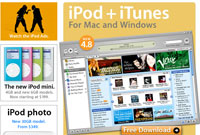 Sony BMG Music Entertainment has announced that it intends to add copy-restricting software to its latest CDs.
Sony BMG Music Entertainment has announced that it intends to add copy-restricting software to its latest CDs.
The software is designed to limit consumers to making no more than three copies of a CD, and marks Sony’s determination to bolt on restrictions to a twenty year-old music format that currently makes copying and digital distribution a breeze.
This year has already seen more than two dozen copy-restricted titles released – including albums from the Backstreet Boys, the Foo Fighters and George Jones – and Sony has flagged its intention to beef up their anti-copying campaign.
Rival US companies haven’t been too impressed with the restrictive software thus far, saying that the software was too easily defeated and that working versions did not allow consumers to transfer music to portable devices and music players as freely as the industry would like.
Instead, they’ve been badgering Apple Computer to amend its software and “make its technologies compatible with copy-prevention tools”.
A major sticking point is that the restrictive software used by Sony BMG is currently incompatible with Apple’s popular iPod.
 This doesn’t affect Apple computer users – they can freely copy and transfer music from the restricted CDs to their iPods – but consumers using Microsoft’s Windows software won’t hear a note, although they will be able to transfer music to Windows Media-supporting devices.
This doesn’t affect Apple computer users – they can freely copy and transfer music from the restricted CDs to their iPods – but consumers using Microsoft’s Windows software won’t hear a note, although they will be able to transfer music to Windows Media-supporting devices.
Thomas Hesse, president for global digital business at Sony BMG, said Apple could “flick a switch” to amend its programming to work with the restrictive software.
“It’s just a proprietary decision by Apple to decide whether to play along or not,” Hesse said. “I don’t know what more waiting we have to do. We think we need to move this forward. Time is ticking, infringement of intellectual property is happening all over, and we’ve got to put a stop to it I think.”
Analysts suspect that Sony is playing to the gallery a tad here, seeing as a Web site set up by the company will happily despatch emails to users explaining how they can unlock the CD’s software and make music files available for unlimited copying and transferring.
Mike McGuire, an analyst at Gartner G2, summed up the move by Sony BMG by describing it as a “very interesting public negotiation”.
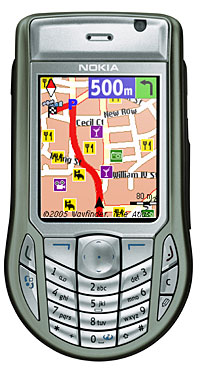 Nokia and Wayfinder Systems have proudly proclaimed the availability of the Nokia 6630 Navigation Pack, a compact smartphone-based navigation package for folks on the move.
Nokia and Wayfinder Systems have proudly proclaimed the availability of the Nokia 6630 Navigation Pack, a compact smartphone-based navigation package for folks on the move. Never one to knowingly undersell his product, Jonas Sellergren, VP Product Management, Wayfinder Systems proclaimed “the Wayfinder Navigator application on the Nokia 6630 brings the ultimate navigation solution to the consumer.”
Never one to knowingly undersell his product, Jonas Sellergren, VP Product Management, Wayfinder Systems proclaimed “the Wayfinder Navigator application on the Nokia 6630 brings the ultimate navigation solution to the consumer.”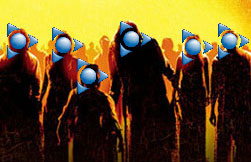 A recent study by security vendor Prolexic Technologies has declared AOL to be king of the zombies, with their customer’s machines accounting for more infections than any other ISP.
A recent study by security vendor Prolexic Technologies has declared AOL to be king of the zombies, with their customer’s machines accounting for more infections than any other ISP. In full-on PR schmooze mode, AOL spokesman Andrew Weinstein declared the numbers to be “great news” for the company, pointing out that the number of Zombies on its network is actually low in relation to the total number of its members.
In full-on PR schmooze mode, AOL spokesman Andrew Weinstein declared the numbers to be “great news” for the company, pointing out that the number of Zombies on its network is actually low in relation to the total number of its members. In a novel move to publicise the benefits of broadband for regional dwellers, the Welsh Assembly Government’s Broadband Wales Unit sent mobile Internet gateways scurrying around the valleys and mountains of lovely, lovely Wales.
In a novel move to publicise the benefits of broadband for regional dwellers, the Welsh Assembly Government’s Broadband Wales Unit sent mobile Internet gateways scurrying around the valleys and mountains of lovely, lovely Wales. The Get Smart – Get Broadband campaign revs up at Swansea Party in the Park this Sunday, where fans will be able to send messages (known in the vernacular as “shout outs”) from the Smart Cars to a giant onstage screen.
The Get Smart – Get Broadband campaign revs up at Swansea Party in the Park this Sunday, where fans will be able to send messages (known in the vernacular as “shout outs”) from the Smart Cars to a giant onstage screen.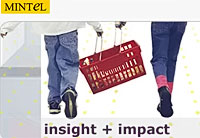 A report by compilers Mintel International has revealed that pets are being ousted by consumer electronics in British homes.
A report by compilers Mintel International has revealed that pets are being ousted by consumer electronics in British homes. The study observed that, “In those families with children, the demand for pets may not be as strong as it once was, since many children now prefer to immerse themselves in the world of computer games and TV programmes”.
The study observed that, “In those families with children, the demand for pets may not be as strong as it once was, since many children now prefer to immerse themselves in the world of computer games and TV programmes”.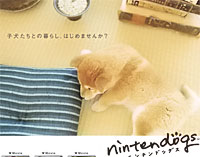 But it’s not all bad news for our precious pampered pooches and treasured tabbies, with the report revealing that sales of pet food, accessories and pet insurance have rocketed by 24 percent in the past five years, reaching a total of US$6.5 billion.
But it’s not all bad news for our precious pampered pooches and treasured tabbies, with the report revealing that sales of pet food, accessories and pet insurance have rocketed by 24 percent in the past five years, reaching a total of US$6.5 billion. With the rise of home entertainment robots like the Sony Aibo and the forthcoming Nintendo virtual pet game, Nintendogs (where virtual dogs will respond to voice commands and bark at passing Nintendog consoles), we wonder how long it will be before children think that pets live on batteries.
With the rise of home entertainment robots like the Sony Aibo and the forthcoming Nintendo virtual pet game, Nintendogs (where virtual dogs will respond to voice commands and bark at passing Nintendog consoles), we wonder how long it will be before children think that pets live on batteries. According to a new study from Internet audience statisticians Nielsen//NetRatings, nearly one-fifth of Web users who read newspapers prefer online to offline editions.
According to a new study from Internet audience statisticians Nielsen//NetRatings, nearly one-fifth of Web users who read newspapers prefer online to offline editions.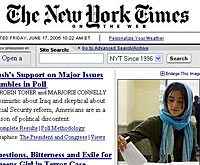 “A significant percentage of newspaper readers have transferred their preference from print to online editions,” said Davidson.
“A significant percentage of newspaper readers have transferred their preference from print to online editions,” said Davidson.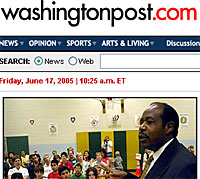 As traffic has increased traffic to news sites, newspaper editors have been allocating more content to their online editions, adding frequent news updates, weather news, original content, message boards and editorial blogs.
As traffic has increased traffic to news sites, newspaper editors have been allocating more content to their online editions, adding frequent news updates, weather news, original content, message boards and editorial blogs.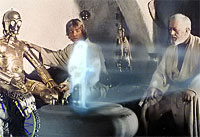 US scientists have created imaging technology that lets viewers enjoy what they claim to be the first truly three-dimensional holographic movies.
US scientists have created imaging technology that lets viewers enjoy what they claim to be the first truly three-dimensional holographic movies.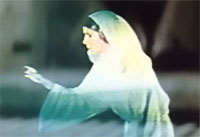 Made by Texas Instruments, these clever puppies are currently used in television, video and movie projectors and incorporate a computer that processes an incoming digital signal several thousand times a second.
Made by Texas Instruments, these clever puppies are currently used in television, video and movie projectors and incorporate a computer that processes an incoming digital signal several thousand times a second.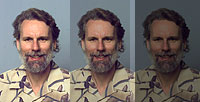 If you look at interferograms on a PC screen, all you get is a series of random black dots creating an effect that looks a bit like a telly on the blink.
If you look at interferograms on a PC screen, all you get is a series of random black dots creating an effect that looks a bit like a telly on the blink. Emerging blinking from their underground laboratories, the overworked boffins at Samsung have announced the creation of the SGH-E620 Bluetooth voice recognition phone which is a Bluetooth mobile with – you guessed it! – voice recognition technology.
Emerging blinking from their underground laboratories, the overworked boffins at Samsung have announced the creation of the SGH-E620 Bluetooth voice recognition phone which is a Bluetooth mobile with – you guessed it! – voice recognition technology. Vodafone has made their service more alluring to international business travellers by cutting roaming charges on their 3G data networks.
Vodafone has made their service more alluring to international business travellers by cutting roaming charges on their 3G data networks.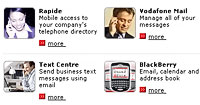 According to analysts Gartner, the new prices demonstrate that operators are currently charging too much; “This is a sign that mobile operators are starting to recognise they charge too much for roaming data services,” they added, as your writer’s head nodded vigorously in agreement (while making snarling noises in the direction of T-Mobile).
According to analysts Gartner, the new prices demonstrate that operators are currently charging too much; “This is a sign that mobile operators are starting to recognise they charge too much for roaming data services,” they added, as your writer’s head nodded vigorously in agreement (while making snarling noises in the direction of T-Mobile). Gartner noted that with Vodafone only selling sold 300,000 3G data cards since launching the 3G data network in January 2004, the company is hoping that the reduced roaming charges will boost this figure.
Gartner noted that with Vodafone only selling sold 300,000 3G data cards since launching the 3G data network in January 2004, the company is hoping that the reduced roaming charges will boost this figure. Apple and the Sundance Channel have signed a deal that will make content from the cable network exclusively available as podcast downloads from the Apple iTunes Web site next month, according to AdAge.
Apple and the Sundance Channel have signed a deal that will make content from the cable network exclusively available as podcast downloads from the Apple iTunes Web site next month, according to AdAge. One of the first iTunes podcast features scheduled for download from the Sundance Channel will be The Al Franken Show who is, apparently, an Air America talk show host.
One of the first iTunes podcast features scheduled for download from the Sundance Channel will be The Al Franken Show who is, apparently, an Air America talk show host.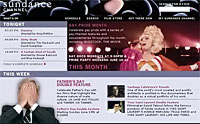 The feature in AdAge also reports that Sundance will receive Apple’s post-production editing equipment and expertise as part of the barter deal, with the two companies likely to collaborate on the Apple retail level in the future.
The feature in AdAge also reports that Sundance will receive Apple’s post-production editing equipment and expertise as part of the barter deal, with the two companies likely to collaborate on the Apple retail level in the future.